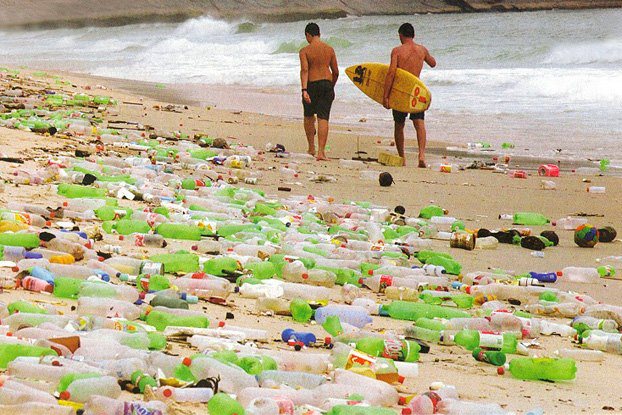We all know that bottled water is a wasteful, high-cost convenience. But Americans are addicted. This year, we consumed four times as many gallons of bottled water as we did in 1997. So maybe it’s time for a reminder: commercially bottled water isn’t any cleaner or healthier than the water we get from tap. In fact, it’s worse and it costs more.
In the U.S., municipal water supplies are tested multiple times every day. The moment a contaminant is detected, the supply is shut down and thoroughly investigated. Bottled water, on the other hand, is one of the least regulated commodities in the U.S. Independent studies have repeatedly found alarming levels of fecal material, bacteria, and plastic polymer chemicals in bottled samples.
Of course, the biggest costs come from the bottles themselves – considering that Americans go through 35 billion plastic bottles each year. Four in five of these bottles don’t get recycled, choking up U.S. landfills or rivers. This is bad news for our waterlife and wildlife because many of these bottles contain traces of harmful xenoestrogens like BPA. Like other inorganic hormones, BPA compounds in fat cells and is never fully flushed out of our bodies. The Food and Drug Administration (FDA) even banned this chemical from baby bottles and sippy cups last summer after dozens of studies linked long-term exposure to increased risks for certain cancers and birth defects.
Could the raising healthcare expenditures be allayed slightly if we paid more attention to the unperceived risks of drinking from BPA-laden water bottles? Perhaps, if you consider the correlation between BPA and cancer risks. The National Institutes of Health (NIH) provided an estimate in 2008 that cancers collectively accounted for $77.4 billion in direct medical costs. Proper health insurance can ease the economic pains of paying for expensive cancer treatments, but the U.S. Census Bureau reported that about 50 million people were uninsured in 2010. Worse, by 2020 medical expenditures for cancer are expected to reach $158 billion or higher.
Check out the latest video in the Hidden Costs Series to see the staggeringly high costs of bottled water. Share the info with your friends and let’s finally kick this $11.7 billion bad habit.
Video Transcript: The Hidden Costs of Bottled Water
Some plastic bottles contain BPA, a compound that causes hormonal imbalances. Also, DEHP and PET, two very hard to pronounce chemicals linked with liver issues, fetal development problems, and more, are found in some bottles.
- Health: C
Americans toss 35 billion plastic bottles a year. That’s 111 bottles per person. Each bottle requires about 1/4 of its capacity in crude oil to be produced and distributed. Recycling just one bottle would save the same amount of energy required to power a 60 watt bulb for six hours. Unfortunately, only 20% of water bottles are recycled each year.
- Environment: F
While bottled water isn’t necessarily expensive compared to a car, the truth is there’s only about 4 cents worth of water in each bottle, a 96% markup on the essential product. From 1990 to 2007, bottled water consumption grew from 2.2 billion gallons to 8.8 billion gallons, and the increased consumption isn’t tapering. It’s an $11.7 billion business.
- Economy: C
Final grade: D+
To see more videos from the Hidden Costs series, check out InsuranceQuotes.org.
Article provided courtesy of Eric Butler
